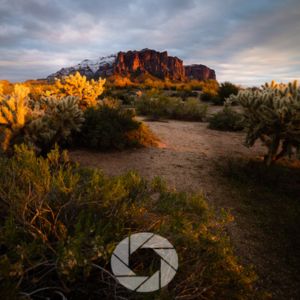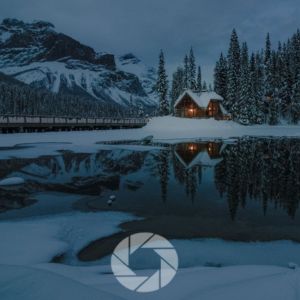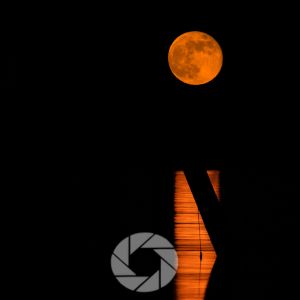
One of the first questions beginner landscape photographers ask is: what’s the best focal length for landscapes?
The truth is, there’s no single answer. Instead, it comes down to knowing when to use a wide-angle vs telephoto in landscape photography and how each lens changes not just your composition, but also the story your image tells.
In this post, we’ll compare wide angle and telephoto lenses for landscapes, explore practical shooting tips, and share beginner-friendly advice on making the right choice in the field.
I receive a small commission from links in this post, thank you for your support
Practical Shooting Tips for Wide Angle Vs Telephoto
Wide Angle Lenses for Landscapes
Wide angle lenses stretch the land open, revealing vast skies, sweeping foregrounds, and a sense of scale. Telephoto lenses, on the other hand, compress distance, isolate subjects, and reveal patterns you might otherwise miss. Both are powerful tools. The real skill lies in knowing how and when to use them.
| Wide Angle Lens | Telephoto Lens | |
|---|---|---|
| Field of View | Expansive; captures large portions of the scene | Narrow; isolates specific parts of the landscape |
| Strengths | Shows scale, grandeur, dramatic skies, and immersive foregrounds | Compresses distance, emphasizes layers, isolates peaks or details |
| Best For | Big skies, sweeping coastlines, canyons, forests with strong foregrounds | Mountains, distant light patches, minimalist scenes, abstract patterns |
| Composition Tips | Use strong foregrounds and leading lines; watch for distortion | Look for repeating shapes, textures, or isolated subjects; use layering |
| Challenges | Distant subjects appear small; distortion at very wide focal lengths | Camera shake magnified; haze can soften distant subjects |
| Mood & Storytelling | Expansive, immersive, “being there” feel | Intimate, focused, dramatic, or abstract storytelling |
What Is a Wide Angle Lens?
A wide angle lens for landscapes typically means anything from 14mm to 35mm on a full-frame camera. It expands your field of view, letting you include more of the scene.
Benefits of Wide Angle Lenses
A wide angle lens offers an expansive field of view, making it perfect for capturing vast skies, sweeping coastlines, or entire mountain ranges in a single frame.
These lenses also emphasize the foreground, exaggerating the relationship between near and far so that even a small rock or flower close to the lens can serve as a strong anchor for your composition.
Perhaps their greatest strength is the immersive perspective they create, drawing viewers into the scene and giving them a sense of truly “being there.”
Challenges of Wide Angle Lenses
Wide angle lenses aren’t without their challenges. Foregrounds can dominate the composition if not chosen carefully, which sometimes distracts from the overall scene.
Distant subjects, such as mountains or cliffs, may appear smaller and less dramatic than they look in reality.
In addition, very short focal lengths (14–18mm) can introduce noticeable distortion, bending lines or stretching proportions in ways that don’t always serve the image.
Pro Tip: When using a wide angle, get close to your foreground. Look for textures, leading lines, or small details that can guide the eye into the bigger scene.
| Wide Angle Lens | Telephoto Lens | |
|---|---|---|
| Benefits | Expansive field of view captures vast skies, sweeping coastlines, and mountain ranges. Foregrounds are emphasized, allowing small details to anchor a composition. Creates an immersive perspective that makes viewers feel as though they’re standing inside the scene. | Compresses distance, stacking mountains and layers for dramatic depth. Isolates details like a single tree or peak, perfect for storytelling. Enables minimalist or abstract compositions with strong emotional impact. |
| Challenges | Foregrounds can overwhelm the frame if not chosen carefully. Distant subjects may appear smaller and less dramatic. Very short focal lengths (14–18mm) can introduce distortion that bends lines unnaturally. | Narrow field of view makes it harder to capture the “big story” of a scene. Camera shake is magnified, requiring steadier technique. Atmospheric haze can soften distant details, especially in valleys or across deserts. |
Telephoto Lenses for Landscapes
Let’s get into telephoto or long-lenses and see why you want to bring one along on field trips.
What Is a Telephoto Lens?
A telephoto lens for landscapes generally covers focal lengths of 70mm to 400mm (or longer). Instead of capturing everything, telephotos let you pick out slices of the landscape.
Benefits of Telephoto Lenses
A telephoto lens allows you to compress distance, making mountains look stacked and layered while creating a sense of depth that feels powerful and dramatic.
These lenses are excellent for isolating details, whether it’s a single tree, a glowing mountain peak, or a shaft of light cutting through a valley.
They also open the door to creative storytelling, giving you the ability to craft minimalist compositions or abstract studies of texture, light, and shape.
Challenges of Telephoto Lenses
Working with telephoto lenses comes with its own set of hurdles. The narrower field of view can make it harder to capture the broader story of a landscape, forcing you to think more carefully about subject choice.
Because telephotos magnify everything (including movement) camera shake becomes more pronounced, so a tripod or faster shutter speed is often essential.
Another challenge is atmospheric haze, which can soften or blur distant subjects and reduce clarity when shooting across valleys, deserts, or large bodies of water.
Pro Tip: Telephotos shine in dramatic light. A compressed mountain range at sunrise or a distant peak glowing under storm clouds becomes unforgettable when framed tightly.
Practical Guide: Wide Angle vs Telephoto Lens Choice
| Situation | Best Lens Choice | Why |
|---|---|---|
| You want to capture vast skies, dramatic scale, or immersive foregrounds | Wide Angle | Expands the scene and emphasizes depth with strong foregrounds |
| You want to highlight just one subject (a peak, a tree, a patch of light) | Telephoto | Isolates details and directs attention with compression |
| You’re telling the story of place and environment | Wide Angle | Provides context and expansiveness |
| You’re telling the story of detail and emotion | Telephoto | Focuses on intimacy, minimalism, or drama |
| The light is dramatic and fleeting | Telephoto | Captures small, powerful moments in compressed frames |
| The landscape feels calm, open, and abundant | Wide Angle | Immerses the viewer in openness and balance |
When to Use Wide Angle vs Telephoto Lens in Landscape Photography
Reach for a Wide Angle Lens When:
- You want to emphasize a dramatic sky.
- A strong foreground element anchors your shot.
- You’re in tight spaces like canyons, forests, or caves.
- You want to capture the grandeur of a scene with scale.
Reach for a Telephoto Lens When:
- You want to isolate one mountain peak from its neighbors.
- Light falls in patches and you want to highlight just one area.
- You’re shooting across valleys, deserts, or water and want to compress distance.
- Minimalist compositions or abstract patterns catch your eye.
Wide Angle Composition Tips
When working with a wide angle lens, place your foreground low and close, using elements like rocks, flowers, or ripples in the water to anchor your composition.
Leading lines such as rivers, trails, or driftwood are especially effective at drawing the viewer’s eye deeper into the frame. Finally, keep an eye on your horizon; a level horizon prevents distortion and ensures your image feels balanced.
Telephoto Composition Tips
With a telephoto lens, look for repeating shapes or textures in features like mountains, dunes, or forests, as these patterns become more pronounced when compressed.
Layers of light and shadow are another powerful tool, creating depth even in seemingly flat scenes.
Don’t be afraid to embrace negative space either; leaving areas of sky or water around your subject can produce calm, minimalist frames that feel intentional and elegant.
Perspective, Storytelling, and the Four Elements
Lens choice isn’t just technical; it’s symbolic.
- Wide angle perspective is like opening yourself to the whole seasonal cycle, embracing the full sweep of earth, sky, and air.
- Telephoto storytelling is like focusing on a single flame, tree, or stone. Isolate one part of the Wheel of the Year to deepen our connection.
- Compression in photography reminds us of winter: light and space condensing into intimacy and stillness.
- Wide angle expansiveness reflects summer: open, airy, and abundant.
By thinking of lenses this way, you not only capture images, but also tell elemental stories through your compositions.
Best Focal Length for Landscape Photography Beginners
Many beginners ask: what’s the best focal length for landscapes?
My answer: start around 24mm to 70mm.
This midrange gives you flexibility: wide enough to capture bigger views, but long enough to practice isolating details. As your skills grow, you’ll discover whether you lean more toward wide angle drama or telephoto storytelling.
Wide angle vs Telephoto Composition tips: Which is easier for Beginners?
Wide angles are more forgiving because they capture more of the scene. Telephotos require a practiced eye to spot strong subjects.
Can I shoot Landscapes with just one Lens?
Yes, and I frequently do. My favorite go-to is a 24–70mm zoom lens (or 24 – 105) which covers both wide and short telephoto ranges, making it versatile for travel and beginners.
Does Lens choice affect Storytelling in Landscapes?
Absolutely. Wide angles tell the story of place and environment. Telephotos tell the story of focus and detail. Both are valuable.
Conclusion
So, wide angle vs telephoto in landscape photography isn’t about which lens is “better.” Each has strengths: wide angles reveal grandeur and scale; telephotos create intimacy and isolate beauty.
The secret lies in practicing with both, learning to see landscapes through multiple perspectives, and choosing the one that best matches your vision.
Next time you’re in the field, ask yourself: Am I telling the story of the whole land, or just one piece of it? The answer will guide your lens choice.
📸Learn for free!
➡️ FREE Wallpapers and Guides
➡️ DISCOUNTS on future Tours & Tutorials
➡️ TIPS for improving Your photography

I don’t share your Info with anyone. You can unsubscribe at anytime.
- Practical Shooting Tips for Wide Angle Vs Telephoto
- Wide Angle Lenses for Landscapes
- What Is a Wide Angle Lens?
- Benefits of Wide Angle Lenses
- Challenges of Wide Angle Lenses
- Telephoto Lenses for Landscapes
- What Is a Telephoto Lens?
- Benefits of Telephoto Lenses
- Challenges of Telephoto Lenses
- Practical Guide: Wide Angle vs Telephoto Lens Choice
- When to Use Wide Angle vs Telephoto Lens in Landscape Photography
- Wide Angle Composition Tips
- Telephoto Composition Tips
- Perspective, Storytelling, and the Four Elements
- Best Focal Length for Landscape Photography Beginners
- Wide angle vs Telephoto Composition tips: Which is easier for Beginners?
- Can I shoot Landscapes with just one Lens?
- Does Lens choice affect Storytelling in Landscapes?
- Conclusion
- 📸Learn for free!





